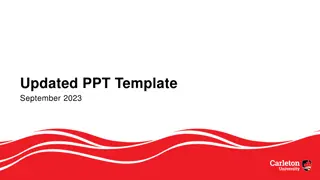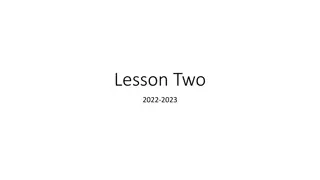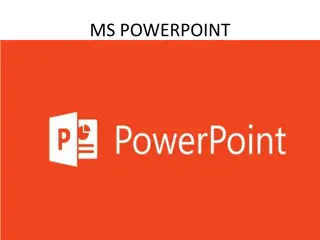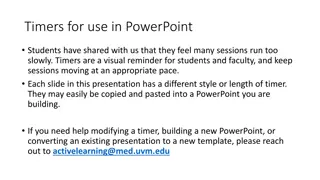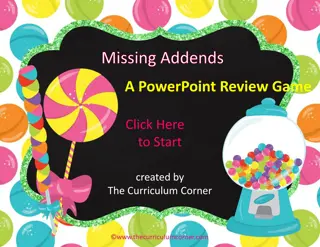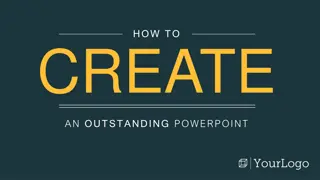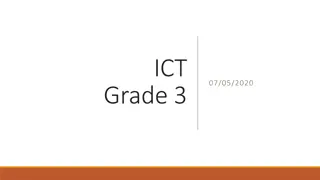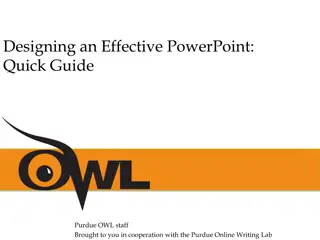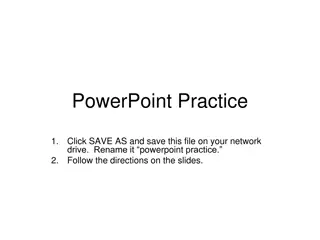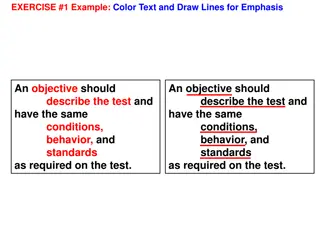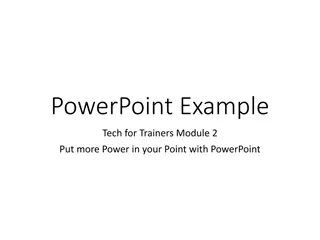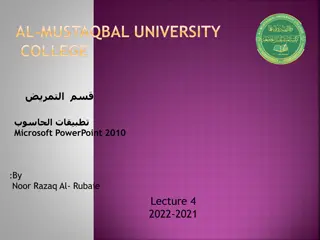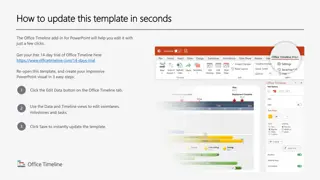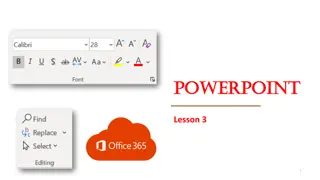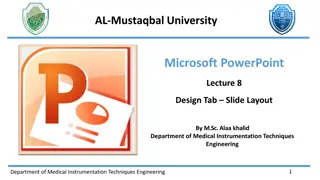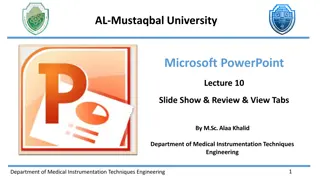
Understanding Distribution Channels in Marketing
Explore the key concepts of direct and indirect distribution, factors influencing channel selection, strategies for effective distribution, the role of consumer preferences, and how technology enhances distribution processes. Learn about wholesalers, retailers, benefits they offer, and the types of retail businesses. Discover why all marketing functions are essential in a distribution channel.
Download Presentation

Please find below an Image/Link to download the presentation.
The content on the website is provided AS IS for your information and personal use only. It may not be sold, licensed, or shared on other websites without obtaining consent from the author. If you encounter any issues during the download, it is possible that the publisher has removed the file from their server.
You are allowed to download the files provided on this website for personal or commercial use, subject to the condition that they are used lawfully. All files are the property of their respective owners.
The content on the website is provided AS IS for your information and personal use only. It may not be sold, licensed, or shared on other websites without obtaining consent from the author.
E N D
Presentation Transcript
1 Marketing Ch. 4 Review
2 What is the difference between direct and indirect distribution? Direct distribution producers sell directly to consumers Indirect distribution involves other businesses
3 What are the major factors to be considered when a business selects a channel of distribution? Perishability Distance Special Handling Number of Customers
What are some ways a manufacturer can use to insure the effectiveness of an indirect channel of distribution? 4 Careful selection of channel members Regularly communicating with channel members Providing customer information to help planning.
5 Why are the needs and preferences of consumers so important in planning distribution? If the channel doesn t meet the consumer needs regarding: Location Timing Quality Price the consumer will not make a purchase.
6 What are some ways that computers are used to improve distribution? Taking and processing orders Tracking shipments Handling customer service problems
7 Give an example of a wholesaler and retailer. Wholesaler Companies that assist with distribution activities between business. Seldom sell products to individual consumers. Olean Wholesale, BJ s, Sam s Club Retailer The final business organization in an indirect channel of distribution for consumer products They accumulate the products their consumer needs by buying from manufacturers and wholesalers. Walmart, Shop and Save, Hanson Farms
8 What benefits do wholesalers provide to small retailers? Provide specialized activities Are more efficient Good information sources May be able to provide the latest technology
9 What are the 4 types of retail businesses Single, limited-line stores Mixed merchandise stores Super stores Non-store retailing
10 Why must all marketing functions be performed by some member of a channel of distribution? Each function must be completed for a satisfying exchange to take place. Without each function, either the exchange cannot occur or someone will not be satisfied.
11 Why would a large retailer want to use a wholesaler? A wholesaler could help with obtaining merchandise from small manufacturers, businesses in other countries, or for specialty items that do not have a high sales volume.
12 Why is it possible for an indirect channel of distribution that includes a wholesaler and retailers to be more efficient than a direct channel? Specialized channel members can be more efficient or handle products more quickly and with less damage, thus reducing the cost of distribution.
13 Why is non-store retailing popular with so many consumers? It is often more convenient to order online, through catalogs or from visiting salespeople.
14 What is the difference between exporting and importing? Exporting selling to other countries Importing buying from other countries
15 Name the 7 Marketing Functions to be performed in conducting international business. Product/Service Management Distribution Selling Marketing Information Management Financing Pricing Promotion
Why do many companies fail to consider international marketing when selecting target markets? 16 If businesspeople don t have international experience they may think international marketing is too difficult and expensive.
What are the possible disadvantages of participating in a joint venture with a business from another country? 17 It requires the cooperation of the other company in decision making. If one of the businesses decides to get out of the venture, it may be difficult for the other business to continue.
18 Why is managing marketing information such an important function when marketing in another country? There will be different sources of information it may be more difficult to collect. Information may need to be communicated in more than one language.
19 What is a non-store retailer? Give 2 Examples. A non-store retailer sells directly to the consumer s home rather than requiring the consumer to travel to a store. Examples Door to Door Selling Online Sales Vending Machines At Home Parties Telephone Sales Tv Shopping Clubs Direct Mail Selling
20 What discrepancies between producers and consumers are reduced with effective distribution? Discrepancies in variety and quantities of products produced and consumed. Discrepancies in the time and location of production and consumption.
21 What two common type of businesses are involved in indirect distribution but not direct distribution? Wholesalers Retailers
22 In what ways can wholesalers benefit manufacturers and retailers? Providing specialized marketing functions and working with small businesses.
23 Approximately what percent of US businesses buy and sell products in other countries. 10 percent
24 What are the challenges involved in distributing products internationally? Transportation Differences in language and currencies Laws Customs
25 Why do many Internet businesses use indirect channels of distribution even though they have direct contact with customers? They still may need help transporting and storing products or providing customer service since most of the business customers will be located in other cities and countries.
What are some examples of products where perishability and special handling are important distribution concerns? 26 Medicine Flowers Fresh food Very expensive items Antiques Jewelry
27 How can having a wholesaler as part of a channel of distribution benefit consumers? The wholesaler may be concerned about the specific needs of unique or smaller target markets. They may have specialized equipment and expertise in performing some of the marketing functions.
28 What advantages do super stores provide for consumers? A large quantity and variety of merchandise in one location. Lower product pricing
29 What disadvantages do superstores provide to consumers? Lower levels of service Fewer specialized products Longer shopping time
30 What characteristics should a company look for when selecting an exporter to help develop international business? An exporter who is very familiar with and experienced in the countries and with the markets the business wants to serve. One who has the specialized expertise in marketing functions the business needs to have performed.
How can technology affect each of the marketing mix elements for a company involved in international marketing? 31 Product the country must have the technology to use the product. Price the technology may differ among different countries Place technologies for transporting and storage and tracking shipments using barcode technology. Promotion a country may have unique laws or procedures for using media. Internet access may be restricted for communicating with customers.


